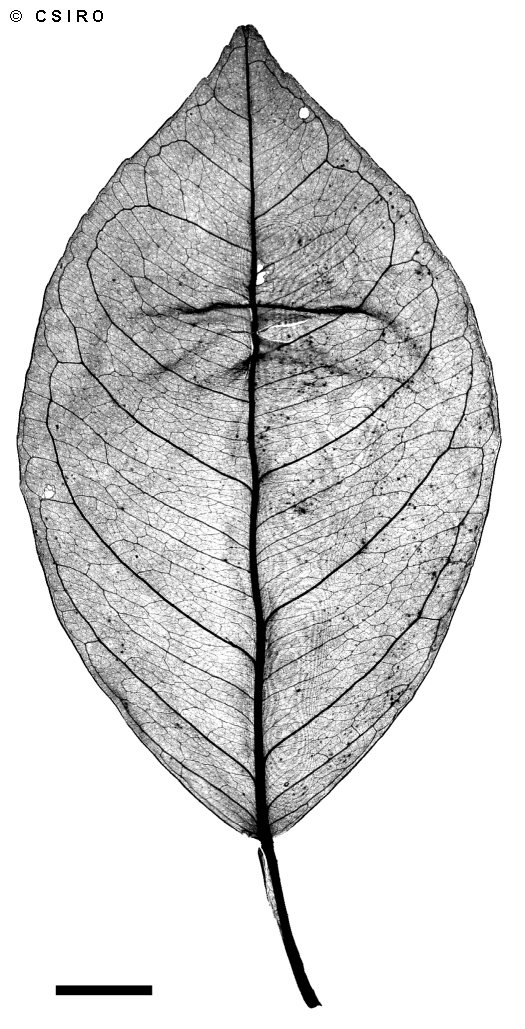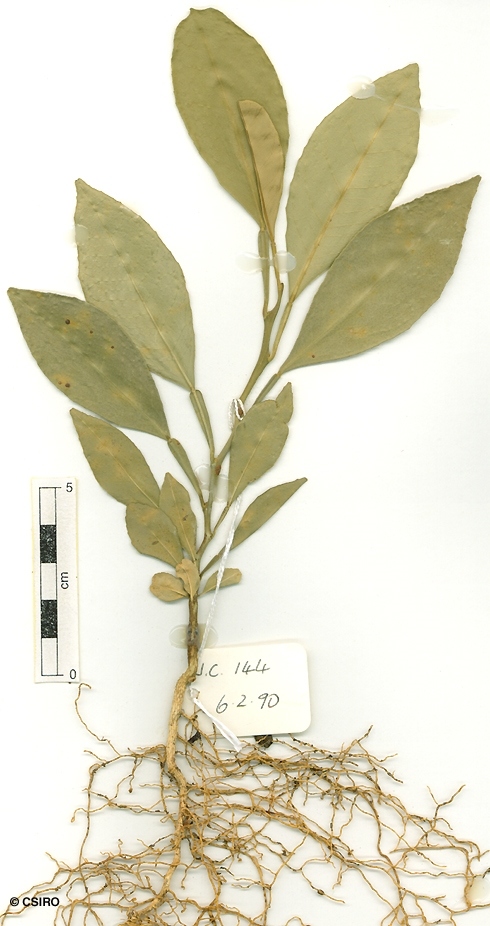Australian Tropical Rainforest Plants - Online edition
Citrus x aurantium L.
Click/tap on images to enlarge

Scale bar 10mm. © CSIRO

10th leaf stage. © CSIRO

Cotyledon and 1st leaf stage, hypogeal germination. © CSIRO
Family
Linnaeus, C. von (1753) Species Plantarum 2: 782. Type: Probably cultivated in Europe, Herb. Linn. 937.2, upper row of leaves.
Common name
Sweet Orange; Orange; Orange, Sweet
Stem
A small tree seldom exceeding 30 cm dbh.
Leaves
Flowers
Fruit
Fruit depressed globular to +/- patelliform, about 7-11 cm diam., surface +/- smooth or slightly pitted. Pulp orange in colour, sweet.
Seedlings
Distribution and Ecology
An introduced species originally from China and Vietnam, widely cultivated in Australia and now naturalised in NEQ. Altitudinal range from 400-800 m. Grows on farmland and in rain forest regrowth.
Synonyms
Citrus aurantium var. sinensis L., Species Plantarum 2: 782 (1753), Type: Probably cultivated in Europe, Herb. Linn. 937.2, upper row of leaves. Citrus sinensis (L.) Osbeck , Reise Ostindien China: 250 (1765).
RFK Code
1000
Copyright © CSIRO 2020, all rights reserved.

Web edition hosted at https://apps.lucidcentral.org/rainforest




